- Biomedical Research (2015) Volume 26, Issue 1
Total alkaloids in Dipsacus asperoides and their effects on proliferation of osteosarcoma SaOS-2 cell lines and gene expression of VEGF.
Jianhui Dai1*, Haibin Lin1, Susheng Niu2, Xianwei Wu1, Yujun Wu1, Huaizhi Zhang1
1Department of Orthopedics Affiliated Hospital of Putian University, Fujian 351100, China;
2College of Orthopedic Institute Fujian University of Traditional Chinese Medicine, Fujian 350001, China
- Corresponding Author:
- Jianhui Dai
Department of Orthopedics
Affiliated Hospital of Putian University
Fujian 351100, China
Accepted date: September 25 2014
Abstract
Dipsacus asperoides is a traditional Chinese medicine, commonly used in the treatment of various disorders of bones, joints and tendons and also in neurodegenerative diseases. Total alkaloids are one of the main ingredients of Dipsacus asperoides. The aim of this study is to optimize the extraction process of alkaloids in Dipsacus asperoides, and to explore their effects on proliferation of osteosarcoma SaOS-2 cell lines and gene expression of vascular endothelial growth factor (VEGF), thereby laying the theoretical basis for the use of traditional Chinese medicine in treatment of osteosarcoma. Three conventional methods; namely the Soxhlet reflux extraction, conventional maceration extraction, and ultrasonic extraction were used to extract alkaloids from Dipsacus asperoides, and the yields of extracts were investigated. Human osteosarcoma SaOS-2 cell lines were thawed, and passaged when they were grown to confluence. The experiment was divided into blank control group, as well as 5%, 10%, 15% Dipsacus asperoides total alkaloids intervention groups. CCK-8 was used to detect the inhibitory effect of the total alkaloids on cell proliferation. RT-PCR was used to detect VEGF gene expression. CCK-8 assay results showed that at different points in time, different concentrations of the total alkaloids in Dipsacus asperoides had inhibitory effects on growth of SaOS-2 cells. RT-PCR revealed no significant suppression of VEGF gene expression among each Dipsacus asperoides total alkaloid group, but gene expression of VEGF showed a decreasing trend with the increase in the concentration of total alkaloids.
Keywords
Dipsacus asperoides, total alkaloids, SaOS-2, cell proliferation, VEGF
Introduction
Dipsacus asperoides is a commonly used traditional Chinese medicine, which has the actions of nourishing liver and kidney, strengthening tendons and bones and preventing uterine bleeding [1]. It is used in the clinical treatment of various disorders of bones, joints and tendons, injuries from falling and hitting, fractures, and other symptoms [2,3]. Main chemical constituents of Dipsacus asperoides include triterpenoid saponins, alkaloids, iridoids, volatile oils, etc., of which total alkaloids are the effective ingredients for healing bone injuries [4,5]. So far, determination of total alkaloid content in Dipsacus asperoides has rarely been reported. This paper compares the methods of extraction and isolation of total alkaloids in Dipsacus asperoides, and determines the total alkaloid content by UV-visible spectrophotometry using bromocresol green as chromogenic reagent, thus providing quality evaluation basis for better research and control of Dipsacus asperoides resources.
Osteosarcoma is the most common malignant bone tumor, which accounts for about one third of all bone malignancies. Despite the widespread implementation of high-dose chemotherapy and limb salvage surgery, the survival rate of osteosarcoma patients, especially the 5-year survival rate, is only around 60% due to high malignant potential, early lung metastasis, and poor prognosis [6]. Therefore, effective preventive measures need to be established to improve the survival rate of patients. This study explores the effects of total alkaloids in Dipsacus asperoides on the biological behavior of osteosarcoma SaOS-2 cell lines in-vitro, in order to provide the theoretical basis for the application of total alkaloids in Dipsacus asperoides for the treatment of osteosarcoma.
Materials
Instruments
Conventional incubator (SMD-1201), Shimadzu, Japan; inverted phase contrast microscope (Canon IXS2), Canon, Japan; FBS, Gibco; cell dissociation solution, Kangnai, USA; CCK-8 kit, Yunnan Zijin Biotechnology Co., Ltd.; GeneAmp PCR system (2400), ABI; high-speed refrigerated centrifuge (64R), Beckman Coulter; ultrasonic disruptor (CDD-9), pulverizer (TH-FS02), heating mantle (TH-DRT01), water bath kettle (TH-SYD- 3), drying oven (TH-GZX-1), Beijing Tongheng Instruments Co., Ltd.
Drugs and reagents
Dipsacus asperoides was collected from Chengdu, Sichuan, which was identified by Professor Wang Fang of the Botany Research Group, Chengdu University of TCM as the dried root of Dipsacus asperoides. C. Y. Cheng et T. M. Ai. RT-PCR primers were designed using premier 5.0 software, and synthesized by Invitrogen Shanghai; 75% ethanol, chloroform, sulfuric acid, potassium ferricyanide, ferric chloride, and sodium hydroxide were all chemically pure reagents, which were purchased from Chengdu Fengcheng Reagents Co., Ltd. Trizol reagent and reverse transcription kit were provided by Invitrogen, USA.
Methods
Processing of raw materials
After air drying, Dipsacus asperoides was placed in a 60° oven and dried to a constant weight, then crushed into powder using a pulverizer. The mixed powder was then screened by using 40-mesh, 60-mesh, and 80-mesh size sieves.
Soxhlet reflux extraction
Ten gm of dry mixed powder was weighed, appropriate amount of 75% ethanol added and extracted under reflux three times, each time lasted 2 hrs. The same operation was repeated three times. pH of the extracts was adjusted to alkaline and again extracted three times with chloroform and evaporated to dryness in a water bath to produce a pale yellow powder. This powder was the crude extract of total alkaloids from Dipsacus asperoides, which was weighed for the calculation of extraction yield.
Conventional maceration extraction
Ten gm of dried mixed powder of Dipsacus asperoides was weighed, placed in a beaker and completely immersed in 75% ethanol, then extracted by cold maceration twice, each time lasting 24 hrs. After filtration, the filtrates were collected and the pH of extracts was adjusted to distinct alkaline. The resulting extracts were re-extracted three times with chloroform, and evaporated to dryness in a water bath to yield a pale yellow powder. This powder was the crude extract of total alkaloids from Dipsacus asperoides, which was weighed for the calculation of extraction yield.
Ultrasonic extraction method
Ten gm of dried mixed powder of Dipsacus asperoides was weighed, placed in a 100 ml beaker, 100 ml of 75% ethanol was added and ultrasonicated at room temperature under an ultrasonic power of 200 W for 30 min. The procedure was repeated three times. After filtration, filtrates were collected and the pH of extracts adjusted to distinct alkaline. The extracts were then re-extracted three times with chloroform, and evaporated to dryness in a water bath to obtain a pale yellow powder. This powder was the crude extract of total alkaloids from Dipsacus asperoides, which was weighed for the calculation of extraction yield.
Extraction yield of total alkaloids in Dipsacus asperoides (%) = weight of crude extract / weight of sample × 100%
In vitro cultivation of osteosarcoma SaOS-2 cell lines
Cryopreserved human osteosarcoma SaOS-2 cell lines were taken, thawed in a 37°Cwater bath, seeded in 10 cm cell culture dishes, cultured in 15% FBS-containing medium, and placed in an incubator set at 37?, 5% CO2 with saturated humidity and incubated. Cells were grown adherently. Twenty-four hours later, culture medium was replaced, and non-adherent cells were discarded. Afterwards, culture medium was replaced once every 2-3 days. Cells were passaged after they had grown to confluence, the cells were dissociated at 37°Cwith cell dissociation solution for 1-2 min, and passaged at a 1:3 ratio. The experiment was divided into a blank control group, and intervention groups of 5%, 10%, and 15% of total alkaloids in Dipsacus asperoides. Cells in the blank control group were cultured in the medium containing 15% FBS; alkaloids and 15% FBS culture medium were prepared in volume ratios of 0.5:9.5, 1:9 and 1.5:8.5, respectively, in the 5%, 10% and 15% of total alkaloids intervention groups.
Action of total alkaloids in Dipsacus asperoides on growth of osteosarcoma SaOS-2 cell lines
After dissociation with cell dissociation solution, the well-grown SaOS-2 cells were blown and cell count was adjusted to 2×103 cells/ml. Then the cells were added to 96 well plates at 100 μL per well, and placed in a 37?, 5% CO2 incubator. After incubation in complete medium for 24 hrs, culture medium and non-adherent cells were removed, and 10 μL of CCK-8 solution was added to each well on the 1st, 2nd, 3rd, and 4th days, respectively, after incubation in a cell incubator for an additional 1 hr. Absorbance was measured by a microplate reader using a 420-480 nm filter.
Cell inhibition rate = (1-mean absorbance of experimental group / mean absorbance of control group) × 100%.
Action of total alkaloids in Dipsacus asperoides on VEGF expression in osteosarcoma SaOS-2 cell lines
Cells were seeded in 96-well plates at 1×104 cells/well. After culturing for 24 hrs using complete medium; culture medium and non-adherent cells were removed. Three ml of corresponding culture media was added separately to the blank control and experimental groups. The liquids were changed once every 2 d. After intervention for 7 d, RNA was extracted, and VEGF mRNA expression was determined by RT-PCR.
VEGF primer design: Forward Primer: CAACAT CACCATGCAGATTATGC; Reverse Primer: GCTT TCGTTTTTGCCCCTTTC. GAPDH primer design: Forward Primer: GGTGAAGGTCGGAGTCAACGG; Reverse Primer: GTCATGAGTCCTTCCACGAT. Reaction conditions: initial denaturation at 95°Cfor 10 min, denaturation at 95°Cfor 30 s, annealing at 55°Cfor 30 s, extension at 72°Cfor 30 s, 25 cycles (GAPDH).
Statistical methods
Research data were cycled 28 times (VEGF), and analyzed using one-way ANOVA. P<0.05 was considered statistically significant. Statistical software used was SPSS 11.0.
Results
Results of extraction of total alkaloids in Dipsacus asperoides by three different methods
The three methods, namely Soxhlet reflux extraction, conventional maceration extraction, and ultrasonic extraction all used ethanol as the solvent to extract the total alkaloids from Dipsacus asperoides. The comparative results are shown in Table 1. Under the same processing conditions, the difference in extraction yield was relatively small between ultrasonic extraction and Soxhlet extraction methods, but the difference in time taken was very large. Soxhlet extraction time was 6 X that of the time taken for ultrasonic extraction. Conventional maceration extraction not only required a long time (48 hrs), but also had low extraction yield. From the perspective of extraction time and extraction yield, ultrasonic extraction method is simple and quick to operate, takes short time, and has high extraction yield; which is suitable for the extraction of total alkaloids in Dipsacus asperoides.
Screening of optimal ultrasonic extraction process
In order to investigate the optimal conditions for ultrasonic extraction of total alkaloids in Dipsacus asperoides, using ethanol as solvent, 9 experiments of 3 factors and 3 levels were designed using orthogonal table L9 (33 ). By taking different ultrasonic extraction times, different extraction powers, and different mesh sizes as main investigating factors and utilizing the ‘balanced dispersion’ characteristics of orthogonal test, the optimal conditions were determined with the yield of crude extract as the indicator. The factors and levels are shown in Table 2.
As can be seen from Table 3, RB>RC>RA, so it was clear that extraction mesh size was the most important factor influencing the extraction yield, followed by ultrasonic extraction power, and extraction time. The analysis based on k value revealed that A2 was better than A1 and A3, B3 was better than B1 and B2, and C2 better than C1 and C3. Therefore, the optimal process conditions for extraction of total alkaloids in Dipsacus asperoides were A2B3C2, which meant that the yield of total alkaloids was the highest when extraction time was 20 min, grinding mesh size was 80, and ultrasonic power was 200 W.
Validation of optimal extraction process
In order to ensure the reproducibility and accuracy of the extraction method, validation test was needed. Ten grams of Dipsacus asperoides powder; which was dried to constant weight was weighed, was mixed with 100 ml of 75% ethanol, and extracted under an ultrasonic power of 200 W for 20 min. The subsequent steps were the same with the ‘ultrasonic extraction method’. The extraction was repeated twice, and the extraction yields were 8.10% and 7.96%, respectively. The results showed that the extraction method of optimal process was stable, and had high extraction yield, which indicated that the optimized process was reasonable, practicable, and its results were credible.
Inhibitory effects on proliferation of SaOS-2 cells
At different points in time, different concentrations of the total alkaloids in Dipsacus asperoides all had inhibitory effects on the growth of SaOS-2 cells, and the longer the duration of their actions, the more marked were the inhibitory effects (P < 0.05). Fig. 1.
Effects on VEGF gene expression in SaOS-2 cells
The study of VEGF mRNA expression found that each group of total alkaloids from Dipsacus asperoides did not effectively suppress VEGF gene expression of SaOS-2 cells compared with the control group (P > 0.05). However, we could find from the numerical analysis that VEGF gene expression in SaOS-2 cells showed a decreasing trend with the increase in the concentration of total alkaloids Table. 4. VEGF gene expression showed a decreasing trend with the increase in the concentration of total alkaloids.
Discussion
Three different methods were used to extract total alkaloids in Dipsacus asperoides. Ultrasonic extraction method had the highest extraction yield, followed by Soxhlet reflux extraction, while the conventional maceration extraction method had the lowest yield. Ultrasonic extraction is actually cavitation effect. Ultrasonic waves rupture cell walls, and accelerate the dissolution of substances in cells [7] thus achieving the fastest and most complete extraction. This method not only features high extraction yield, but also is simple to operate, energy saving, and time saving.
Methanol and ethanol can dissolve free alkaloids and their salts, so the use of methanol and ethanol as the solvents for extraction of alkaloids is very common. Although methanol has high polarity, low boiling point, and better solubility than ethanol, it has relatively high toxicity, and therefore, in most cases, ethanol is more preferred as a solvent [8].
Alkaloids often combine with organic acids (such as caffeic acid, citrate acid, oxalic acid, meconic acid) to form salts. During the extraction, crude drug powder can be directly soaked, percolated or heat extracted with alcohol, water or acid water (usually 0.5%-1% sulfuric acid or acetic acid) and other reagents. Different alkaloids have different pH values. Solvents such as chloroform, dichloromethane, and benzene can also be used in the extraction.
Osteosarcoma, which occurs mostly in adolescence, is a type of solid tumor derived from mesenchyme. It is characterized by rich blood supply, high degree of malignancy, strong invasiveness, early metastasis, high metastasis rate, as well as poor prognosis. For early treatment of osteosarcoma and improvement of the survival rate of patients, the search for a safe and effective drug is of utmost importance.
Use of Traditional Chinese Medicine (TCM) for the treatment of malignancies has become a characteristic Chinese method of cancer treatment. TCM treatment of tumors emphasizes more on the aspects of stabilization of tumors, regulation of immune function, improvement of clinical symptoms, reduction of medication side effects and prolongation of patients' survival time [9]. A study has found that total alkaloids in Dipsacus asperoides have direct inhibitory effect on tumor growth; radiosensitizing and radioprotective effects, as well as chemosensitizing and attenuation effects [10]. Therefore, the total alkaloids in Dipsacus asperoides have been used widely in clinical treatment of tumors, but their effect on osteosarcoma is yet to be reported [11-13].
Immortalization is an important biological characteristic of cancer cells. In the present study, we used CCK-8 detection method to investigate the effect of total alkaloids in Dipsacus asperoides on SaOS-2 cell proliferation. Tetrazolium (WST-8) is the major component of CCK-8 kit; it is a compound similar to MTT, which is reduced by the dehydrogenase within the mitochondria to produce formazan in the presence of electron coupling reagent [14]. Our study found that, total alkaloids from Dipsacus asperoides can effectively inhibit osteosarcoma SaOS-2 cell proliferation, and the inhibition efficiency was enhanced with increasing concentration of the total alkaloids.
The growth of malignancies, particularly solid tumors mainly depend on angiogenesis, moreover, tumor itself can also induce new aberrant angiogenesis, thus providing the pathway for the spread of tumors. VEG is the vascular endothelium-specific mitogen, which can promote angiogenesis, and thus provide the material basis for tumor cell metastasis. Once the stationary endothelial cells are exposed to VEGF, they will express proteases to degrade the extracellular matrices, so that the cells will migrate and proliferate, new blood vessels will be formed, which will further promote tumor growth [15]. Therefore, the suppression of VEGF expression is beneficial in the treatment of osteosarcoma. Although our study did not reveal that the total alkaloids in Dipsacus asperoides could effectively suppress VEGF gene expression in SaOS-2 cells, we found that the expression value of VEGF was in a decreasing trend with increase in concentration of the total alkaloids.
This study illustrates that total alkaloids in Dipsacus asperoides can effectively inhibit the proliferation of SaOS-2 cells, which might lay a theoretical foundation for the use of these total alkaloids in the future treatment of osteosarcoma, meanwhile, providing a platform for our follow-up studies.
Conclusion
In future, we wish to improve the concentration and purity of ligustrazine in order to clarify whether the total alkaloids in Dipsacus asperoides can effectively suppress the VEGF gene expression in SaOS-2 cells and study the mechanism of its action on apoptosis of SaOS-2.
References
- Chinese Pharmacopoeia Commission. Chinese Pharmacopoeia, Vol. 1, Beijing: Chemical Industry Press, 2005.
- Yan Y, Zheng P. Progress in pharmacological research of Dipsacus asperoides. Research of Traditional Chinese Medicine 2002; 18: 53-54.
- Wang Y, Zhou LL, Li R. The Study Progress in Dipsacus asper Wall. Lishizhen Medicine and Materia Medica Research 2002; 13: 233-233.
- Niu YB, Li YH, Kong XH, Zhang R, Sun Y, Li Q, Li C, Liu L, Wang J, Mei QB. The beneficial effect of Radix Dipsaci total saponins on bone metabolism in virtro and the possible mechanisms of action. Osteoporos Int 2012; 23: 2649-2660.
- Li XD, Liu ZY, Chang B, Liu DX, Chen B, Guo C, Wang YG, Xu JK, Huang DY, Du SX. Panax notoginseng saponins promote osteogenic differentiation of bone marrow stromal cells through the ERK and p38 MAPK signaling pathway. Cell Physiol Biochem 2011; 282: 367-376.
- He P, Liang S. Expression and significance of XIAP mRNA and Caspase-9 mRNA in osteosarcoma. Shandong Medical Journal 2010; 50: 13-15.
- Zhang X, Ye F. Progress of extraction and purification of alkaloids from botanical pesticides. Pesticide Science and Administration 2007, 28: 28-31.
- Shang ZG, Li SF, Xiao L. Review on extraction technology of alkaloids from plants. Modern Chemical Industry 2002; 1: 56-59.
- Han S, Ao N, Lin ZJ, Deng JJ. TCM treatment of tumors. China Practical Medical 2010; 5: 158-159.
- Wang X, Chen XY. Current situation and prospects of study on the effect of ligustrazine on tumor cells. China Journal of Chinese Materia Medica 2003; 28: 295-298.
- Yeh CR, Chiu JJ, Lee CI, Lee PL, Shih YT, Sun JS, Chien S, Cheng CK. Estrogen augments shear stressinduced signaling and gene expression in osteoblastlike cells via estrogen receptor-mediated expression of ß1-integrin. J. Bone Miner Res 2010; 25: 627-639.
- Qi SF, Zhang YB. Research overview of osteoporosis prevention and treatment with traditional Chinese medicine. Chin J Osteoporos 2009; 15: 230-235.
- Sykaras N, Opperman LA. Bone morphogenetic proteins (BMPs): How do they function and what can they offer the clinician. J Oral Sci 2003; 45: 53-73.
- Liu KD, Zhao JM, Wang JJ, Ma YY, Yang HY, Zheng ZM, Zhao MY, Dong ZM. Effects of Proliferation and Apoptosis in EC9706 Cells by Blocking the Signal Pathway of PKA. Journal of Basic and Clinical Oncology 2010; 21: 206-208.
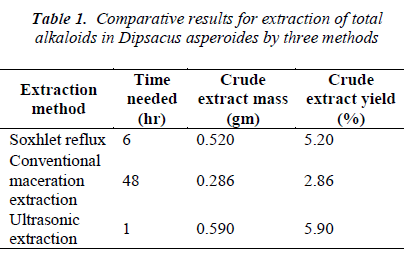
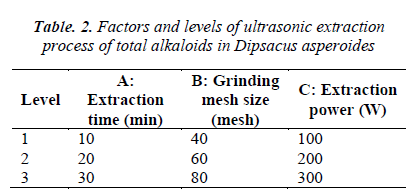
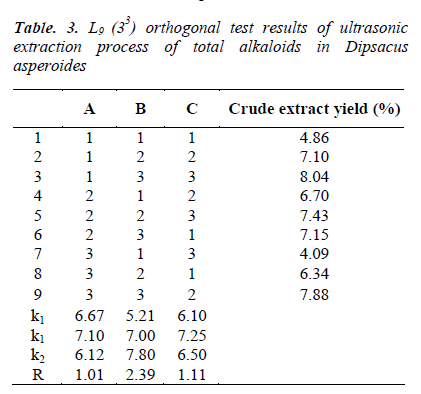
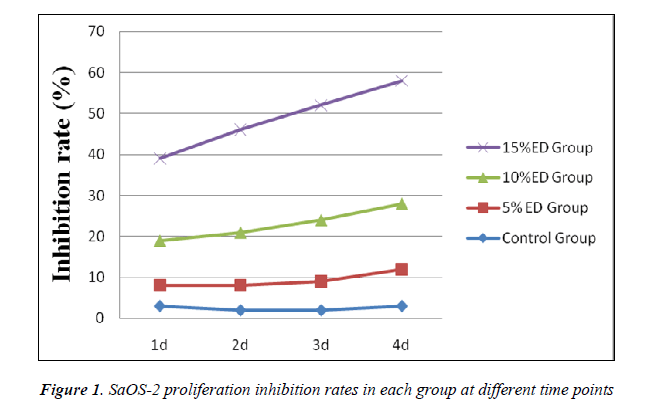
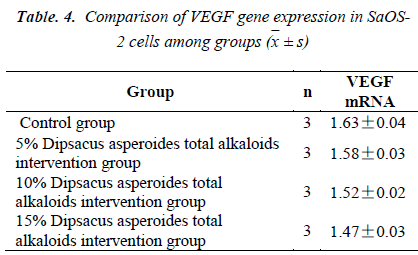
 ± s)
± s)